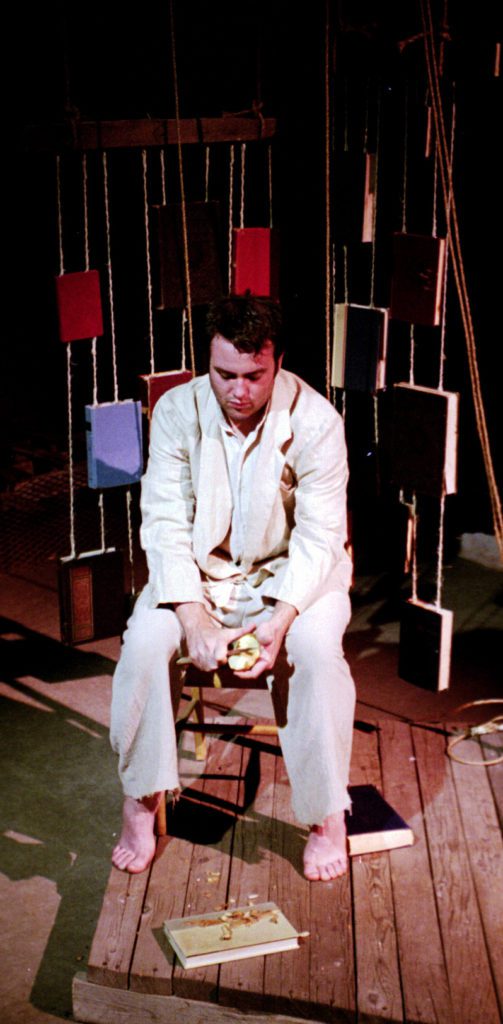This is totally inappropriate.
I should not be laughing this loud. That snort probably wasn’t very attractive, either. It’s also very hard to sit like a lady while you’re emitting nasal honks of delight.
But it’s a new work by Buntport Theater, a bare-bones production called Macblank that’s running in repertory and in the shadow of Kafka on Ice. Well, Macblank may be an afterthought, but then it’s dizzying what Buntport must do on full brain power.
And there is no good reason a play with such a basic, even uninspired, premise should be so blissful except for the manic energy of the five onstage performers, abetted by the two offstage members of the ensemble.
The enjoyment is abetted by knowledge of reality television, Shakespeare’s Macbeth or the style of Buntport, a democratic ensemble that produces only original work in its particular style.
In Macblank, members of a theatrical ensemble are being filmed for reality TV as they stage their newest production, Macbeth. It is a play beleaguered by history, with centuries of tragedies befalling those who attempt it, marked by the 19th-century Astor Place riots – perhaps the last time in history hundreds of Americans showed interest in Shakespearean actors.
As a result of the mishaps and conflagrations, actors are traditionally terrified of uttering the name “Macbeth” in a theater.
So you know where this is going. From the start, skeptics in the ensemble bandy the name around like rubber swords while the superstitious go through increasingly absurd antidotal rituals. Erik Edborg plays Ryan, cast in the lead because of his height and his pompous British accent, acquired during a visit to Stratford – “So I think I know a little something,” he preens.
Beth, the most passionate, superstitious of the lot, feels that she was the natural Macbeth (the thane and his wife are being played by one actor, an in-joke from Buntport’s Cinderella last season). Erin Rollman plays Beth like a grown-up version of her Capitalist Girl Scout character, an obsessive control geek.
She’s trailed around the theater by the lovelorn Greg, Evan Weissman’s most distinctive character yet. Stupid yet thinking he’s cool, Weissman has a childlike idiocy and tendency to spout clichés while making air quotes with eight fingers.
The troupe is rounded out by Hannah Duggan as Miranda, a woman whose life mirrors Shakespearean plots, and Brian Colonna as an overworked actor working at six part-time jobs and the end of his rope.
Because of the show’s repertory schedule with Kafka, it lacks the outlandish costumes and magical sets of most Buntport productions. Rather than a failing, though, it focuses on the script and the delirious wordplay these writers both concoct and embody.
-Lisa Bornstein, October 15, 2004, Rocky Mountain News








